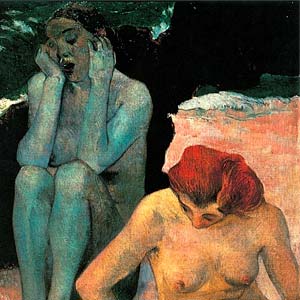Gauguin-Van Gogh. The adventure of new colour
Santa Giulia Museum – Brescia
Curated by M. Goldin
It is not easy to find, in Italy, in the exhibition history of the last decades, an exhibition like this one that has in itself the signs of such a marked magnitude both for the two names that illustrate it and for the works that are convened there. Gauguin and Van Gogh, of course along with Cézanne and Monet, the fathers of so much of the twentieth century painting.
Painters described in two monographic but parallel exhibitions, to illustrate the evolution of their respective paths and the points of tangency that became direct contact in the two months of Arles at the end of 1888. Great importance is given, for Gauguin, to his Tahitian time, just as, for Van Gogh, it is given to the time spent in Arles and Saint-Rémy, where his amazing adhesion to a new colour grew stronger.
The exhibition consists of around 100 paintings. Gauguin and Van Gogh represent, with clear evidence, a fundamental reference in the perception and exaltation of colour, so much so that their painful research has long been used by many painters of the twentieth century. But the exhibition does not intend to focus only on two months of painful coexistence of Gauguin and Van Gogh in Arles, but rather to reconstruct the entire story, biographical and pictorial, of the two artists, indicating the direction of their progress from the first practice to the last. Believing it appropriate to let the public know the complete development of their work, both through comparison and in the distance that has separated these two lives.
The Dutch paintings by Van Gogh have an equal dignity compared to those of Arles, Saint-Rémy and Auvers, precisely to verify, step by step, the changing intensity of the colour. And in the same way Gauguin, described through his famous period spent across the ocean, but also in the Parisian, Breton and Provençal atmospheres. All in the exhibition to trace the meaning of a long history that has so greatly changed the course of contemporary painting.
GALLERY






